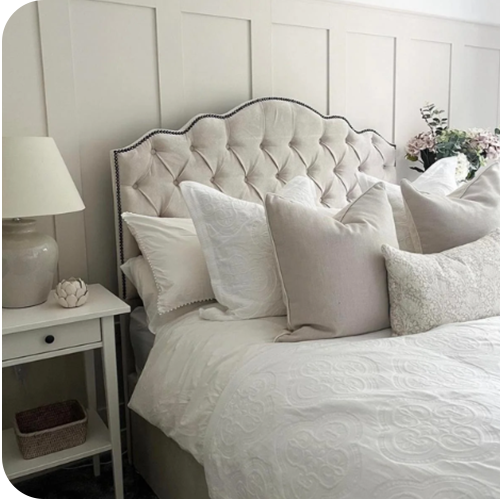How to Make Your Own Footstool
Ever looked at your living space and thought, “I wish I had a comfortable footstool to kick back and relax?” Well, the good news is, you can easily create your own footstool, tailored to your style and comfort preferences. In this era of DIY enthusiasm, crafting your furniture not only saves you money but also provides a sense of accomplishment. Let’s dive into the world of DIY footstools and discover the joy of creating something with your own hands.
Table of contents
Benefits of Making Your Own Footstool

Cost-effectiveness:
One of the primary advantages of crafting your footstool is the cost savings. Store-bought footstools can be pricey, but with a bit of effort and creativity, you can make your own without breaking the bank.
Customization options:
When you make your footstool, you’re in control of the design. From choosing the fabric to deciding on the dimensions, every aspect reflects your taste and style. Say goodbye to generic furniture and embrace the uniqueness of your creation.
Personal satisfaction and pride:
There’s an undeniable sense of accomplishment that comes with completing a DIY project. Making your footstool allows you to showcase your craftsmanship and take pride in a piece of furniture that you can truly call your own.
Materials and Tools Needed
To embark on your footstool-making journey, gather the following materials: . Additionally, ensure you have the necessary tools to bring your vision to life. These might include a saw, drill, measuring tape, and a staple gun, among other items. Having the right tools makes the process smoother and more enjoyable.
Step-by-Step Guide

Choosing the right design and style:
| Step | Task | Description |
| 1 | Design Exploration | Explore footstool designs online or in magazines. Consider existing furniture and room aesthetics. Choose a style that complements your space and aligns with your personal taste. |
| 2 | Measuring and Cutting | Accurately measure and mark materials before making cuts. Ensure precise measurements for a well-proportioned footstool. |
| 3 | Assembling the Frame | Follow the design’s instructions to assemble the frame. Ensure stability and durability as the frame is the foundation of a long-lasting footstool. |
| 4 | Upholstering | Select a durable and visually appealing fabric for the footstool. Stretch and staple the fabric over the frame, paying attention to corners and edges for a professional look. |
| 5 | Finishing Touches | Add embellishments or personalized touches to make the footstool unique. This could include decorative elements, contrasting fabrics, or a hidden storage compartment. Let creativity shine in this final step. |
Creative Ideas for Footstool Designs

· Incorporating different fabrics and textures:
Mix and match fabrics to add visual interest. Consider using a combination of textures, such as smooth leather and plush upholstery, to create a dynamic and appealing design.
· Adding storage functionality:
If space is a concern, design your footstool to double as storage. A hinged top or a hollow interior can provide a discreet yet functional solution for stashing blankets, magazines, or other items.
· Integrating unique patterns or colors:
Don’t be afraid to experiment with bold patterns or vibrant colors. A unique pattern or a pop of color can turn your footstool into a statement piece that enhances the overall aesthetics of your space.
Maintenance and Care
Tips on keeping your DIY footstool in top condition:
Proper maintenance ensures the longevity of your creation. Regularly clean the fabric or material used, and address any wear and tear promptly. This simple upkeep will keep your footstool looking new for years to come.
Conclusion
In conclusion, creating your footstool is a rewarding and budget-friendly venture that allows you to infuse your personality into your living space. From choosing the design to adding unique touches, the process is as enjoyable as the end result. Embrace the DIY spirit, and you’ll not only have a functional piece of furniture but also a conversation starter that reflects your craftsmanship.
Readmore:
How to Arrange Your Furniture for a Functional and Inviting Space
How Divan Beds are Different from Ordinary Beds
Pillow Washing Techniques: Maintain Your Comfort and Hygiene
FAQs
The timeline varies based on your experience and the complexity of the design. On average, it can take a weekend or longer for beginners.
Common mistakes include inaccurate measurements, uneven cuts, and neglecting to stretch fabric tightly during upholstery.
Absolutely! Repurposing old furniture or materials is a sustainable and creative way to make your footstools.
Not necessarily. Many DIY footstools designs cater to various skill levels, and there are plenty of beginner-friendly options.



